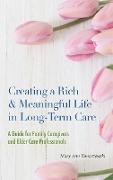Introduction to Philosophical Analysis
BücherAngebote / Angebote:
INTRODUCTION TO PHILOSOPHICAL ANALYSIS by JAMES BUNHAM AND PHILIP WHEELWRIGHT. Originally published in 1932. Contents include: PART ONE METHOD CHAPTER I THE TASK OF PHILOSOPHY 3 1. Is Philosophy Possible 2. The Philosophic Attitude. 3. Philosophic Technique. 4. Philosophical Criticism. y CHAPTER II MEANING 26 1. The Meaning Situation. 2. The Thinking Process. 3. Further Remarks about Meaning. 4. The Mental Aspect of Meaning What is an Idea 5. The Objectification of Meaning. CHAPTER III LOGICAL MEANING 68 1 . The Two Uses of Language. 2. Terms. 3. Definition. 4. Ambiguity. 5. Propositions. CHAPTER IV LOGICAL STRUCTURE 102 1. Relations. 2. Relations between Propositions. 3. A Few Devices. 4. Toward Complications. iv CONTENTS 5. The Dilemma. 6. The Counter-dilemma. 7. Rebuttal and Reductio ad Absurdum. CHAPTER V FACTUAL REASONING . 129 2. Generalization. 3. Causal Analysis. 4. Physical Determinism. 5. Functional Correlation. 6. Statistical Generalization. 7. The Later Stages of Scientific Reasoning. CHAPTER VI DIALECTICAL METHOD 168 1. Realms of Discourse. 2. Dialectical Method. 3. Metaphysics.. xX 4. Fallacies of Metaphysical Reasoning. PART TWO PROBLEMS CHAPTER VII THE WORLD OF PHYSICS 201 1. The Common-Sense World. 2. Classical Physics. 3. Contemporary Physics. 4. The Problem of Reality. CHAPTER VIII THE WORLD OF LIVING THINGS 254 1. Biology and the Physical Sciences. 2. Is Biology a Science 3. Evolution, CHAPTER IX THE SELF 300 1. Historical Preliminary. 2. The Cartesian Dualism. 3. Man a Machine. 4. Subjectivism. 5. Toward Sanity, CHAPTER X MORAL VALUES 348 1 . The Moral Realm of Discourse. 2. Moral Values and Cognate Realms of Fact. 3. Postulates of the Moral Realm. 4. Problems of the Moral Realm. CHAPTER XI RELIGION 385 1. What a Philosophy of Religion Can Do. 2. Religious and Scientific World-Views. 3. Current Attempts at Compromise. 4. The Nature of Beliefw-5. The Attributes of Divinity. CHAPTER XII THE ESTHETIC EXPERIENCE 417 1 . Reductions of the Esthetic Experience. 2. The Autonomy of the Esthetic Experience. 3. The Importance of the Esthetic Experience. CHAPTER XIII THE PHILOSOPHIC ATTITUDE 446 INDEX 459. PART ONE: METHOD. CHAPTER I: THE TASK OF PHILOSOPHY. I throw my dog a piece of meat he tenses certain muscles, relaxes others, flexes his hind legs, throws his head back, suddenly opens and shuts his jaws just in time to catch the meat cleanly, takes a quick bite or two, swallows, and looks very much satisfied. I sit in an Italian church, and watch a young girl praying before the high altar, her head bowed, her hands clasped. I listen to a friend of mine telling with regret how his young son, in spite of punishments, every day leaves school at recess to take a walk in the neighboring country. I stand in an Athens twilight beside a peasant from a mountain district who has for the past half hour silently been watching the Parthenon blacken in the sunset. My eyes follow casually drops of water melting from an icicle attached to the eaves of a high roof. The icicle breaks off, and with it smaller pieces of ice and snow. They fall with increasing speed, at first together then the heavier pieces of ice outdistance the rest, and are shattered against the ground some moments before the smaller particles of snow finish their drop. In a half directed chain of reflections I begin to consider this lag in the time at which the snow reached the ground. The ice is heavier, but I know that this is no part of the explanation and I remember my surprise when I first learned that there was nothing in the nature of heavy bodies that made them drop faster than light bodies...
Folgt in ca. 15 Arbeitstagen




